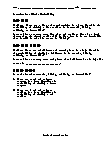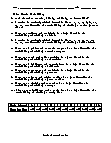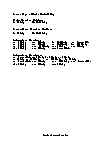Simple Probability Worksheets
How Does Mathematical Probability Tells Us If an Event is Certain, Likely, Unlikely, or Even Impossible? A likelihood or probability is a number that mirrors the opportunity or probability that a specific occasion will happen. Probabilities can be communicated as extents that go from 0 to 1, and they can likewise be communicated as rates going from 0% to 100%. A likelihood of 0 demonstrates that there is no possibility that a specific occasion will happen, though a likelihood of 1 shows that an occasion is sure to happen. A likelihood of 0.45 (45%) demonstrates that there are 45 possibilities out of 100 of the occasion happening. Probability or likelihood is theoretically basic and valuable for straightforward certifiable models. For individuals without foundation in arithmetic or insights, this is, by a long shot, the most effortless to process and apply to genuine fundamental models.
-
Basic Lesson
Introduces the concepts of basic probability. There are 7 blue and 2 red marbles in a jar. Describe the probability of picking a blue marble. Is it certain, likely, unlikely, or impossible?
View worksheet -
Intermediate Lesson
This lesson uses critical thinking skills. A number is randomly picked from this list: 5, 6, 7, 8, 9, 10, 11, 12. Describe the probability of picking a number less than 11. Is it certain, likely, unlikely, or impossible?
View worksheet -
Independent Practice 1
Students practice with 15 basic probability problems. The answers can be found below. There are 4 red and 7 yellow crayons in a box. Describe the probability of picking a yellow crayon.
View worksheet -
Independent Practice 2
Another 15 basic probability problems. The answers can be found below. A number is randomly picked from this list: 2, 4, 8, 9, 15, 16, 17, 18. Describe the probability of picking an even number.
View worksheet -
Homework Worksheet
Reviews all skills in the unit. A great take home sheet. Also provides a practice problem. A number is randomly picked from this list: 1, 2, 4, 10, 11, 14, 16, 17. Describe the probability of picking a number less than 15.
View worksheet
Here's a fun game to play when you are bored:
On the board game "Monopoly," Illinois Avenue has been proven mathematically to be the square that has the highest probability of being occupied by a player. The "Go" square is the second most probable.







